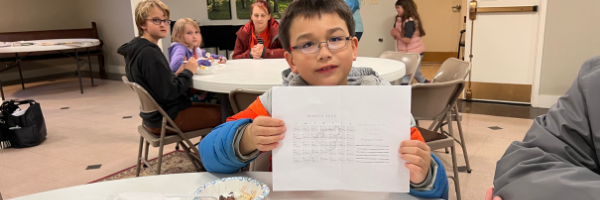
Congratulations to all the CCM students who practiced 30 days in March and completed the March Practice Challenge to join us for our celebratory ice cream party!

Congratulations to CCM violin student Abby Kirincich!
She was invited to perform this summer at the Honors Performance Series by WorldStrides at Carnegie Hall. Bravo Abby!
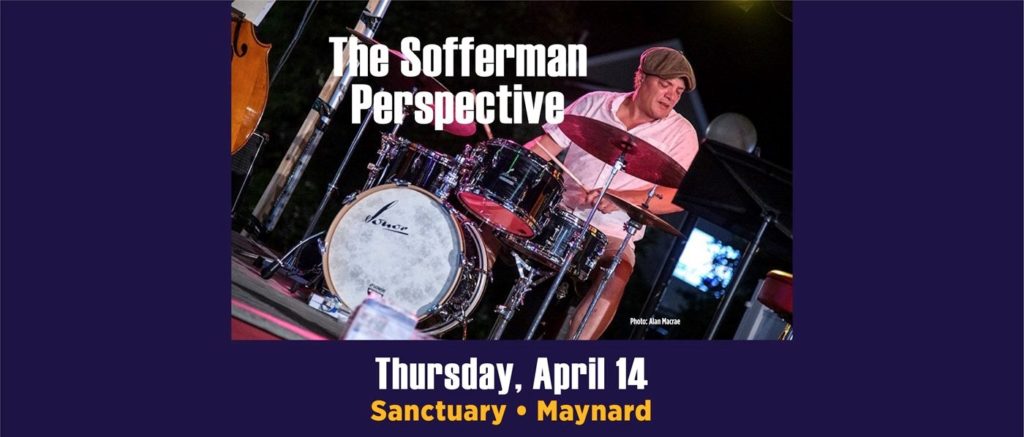
Experience fantastic original modern jazz locally. The Sanctuary, a beautiful vintage music venue located at 82 Main Street in Maynard will host on Thursday, April 14th, The Sofferman Perspective, led by one of our own—Brooke Sofferman, on percussion.
“Here is a promise: You will not hear a local jazz group play with more talent, more focus, more intensity than the quintet led by drummer Brooke Sofferman.”
— Steve Greenlee, Boston Globe
5 excellent CCM piano students perform prior to violinist Sarah Whitney’s concert
Beyond the Notes Spring Mini- Concert Series, Saturday, April 23rd at 7:30—a concert that highlights the works of Black composers and supports social justice.
CCM collaborates with Sarah Whitney at her concert on April 23rd. Plan to arrive at 7:15 to see advanced CCM students perform.
The CCM Listening Project
It’s an all-women-composer edition for April! 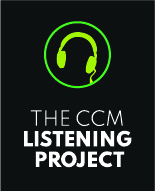
Discover seven great composers and what motivates them. Listen to their beautiful and unique pieces in the April Listening Project Playlist.
Print out your Listening Journal and write down your thoughts. It’s a great way to start insightful conversations with your family, friends, or music instructor!
Take these shortcuts to your April playlist: YouTube or Spotify
April is Parkinson’s Awareness Month
Music energizes and empowers people living with Parkinson’s and their families. Singing and voice therapy helps strengthen voices while having fun. Beyond singing, when the CCM Singing with Parkinson’s Chorus gets together, they experience the joy of making music and celebrate what’s possible.
voice therapy helps strengthen voices while having fun. Beyond singing, when the CCM Singing with Parkinson’s Chorus gets together, they experience the joy of making music and celebrate what’s possible.
Please help us spread awareness of Parkinson’s and our Chorus—which provides numerous therapeutic benefits in a highly supportive environment.
What do Fidelity, Raytheon, and State Street have in common?
They have matching gift programs.
If your employer matches tax-deductible charitable contributions, you can double the impact of your gift to CCM! Concord Conservatory recognizes and thanks to both donor and employer for this generous gesture!
Won’t you please consider giving the gift of music today?
Are you a CCM friend yet?
Join us on Instagram and Facebook to be the first to learn CCM news and more! See what music videos we like, photos we post, practice tips and articles we suggest, and new music in the music world. Be sure to bookmark the CCM Blog to never miss a new post.

If someone asked you to name a composer, what would be the first name to come to mind? Bach? Mozart? Stravinsky? You wouldn’t be alone.
A quick google search for the greatest classical composers of all time will draw a similar pattern of names. In fact, the first 50 composers listed will all have one thing in common. They are all men. An article by the BBC Music Magazine titled “The Greatest Composers of All Time” lists 50 composers—among them, only two are women. Another article on classicfm.com similarly claims to list thirty of “the greatest classical music composers of all time,” and only two are women. On and on, the absence of female representation is stark.
names. In fact, the first 50 composers listed will all have one thing in common. They are all men. An article by the BBC Music Magazine titled “The Greatest Composers of All Time” lists 50 composers—among them, only two are women. Another article on classicfm.com similarly claims to list thirty of “the greatest classical music composers of all time,” and only two are women. On and on, the absence of female representation is stark.
Throughout history, brilliant women have frequently had their art cast in shadow where their male peers have received a spotlight. For hundreds of years, many women were entirely prohibited from writing music, and those that were allowed to compose were rarely published or celebrated. Despite some progress in the modern era to draw attention to the work of historical women, names like Florence Price and Hildegard von Bingen are far from commonly known. The time has long since come for their work to be as well known and regarded as that of their male peers. After all, how can we teach young girls to see the value in their own art if we cannot even recognize the greatness of those who came before them?
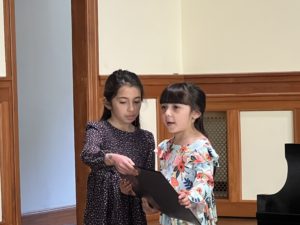 This is why, in an effort to educate our students and community and diversify our own musical repertoires, CCM’s April 9th recital at 1:30 pm featured exclusively female composers. For the recital, each of our students researched and presented a mini-report on the female composer whose music they performed. Demonstrating all the enthusiasm we have come to know and expect of our students—some even prepared PowerPoint presentations!
This is why, in an effort to educate our students and community and diversify our own musical repertoires, CCM’s April 9th recital at 1:30 pm featured exclusively female composers. For the recital, each of our students researched and presented a mini-report on the female composer whose music they performed. Demonstrating all the enthusiasm we have come to know and expect of our students—some even prepared PowerPoint presentations!
In organizing this recital, we at CCM recognize that this is simply a single step towards diversifying the composers represented in our school. “We’ve had to order music for the cellists and violinists that we didn’t have at the school,” says CCM Executive Director Kate Yoder. “We’re encouraging the faculty to expose each other to different music so that more female and underrepresented composers can become part of the repertoire.”
In order for our students to grow both as musicians and young people, they must learn about music created by people from all walks of life. After all, it’s impossible to be inspired by music you have never heard. We’re so excited to hear more work by women composers, not only at our April recital, but the rest of our recitals too!
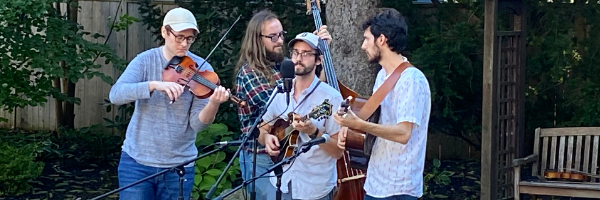
“Here’s my dirty little secret,” Maxfield Anderson says. “I started playing mandolin because of Mumford & Sons.”
As with any tale involving American roots music, there’s an interesting backstory. Growing up in Tulsa, Oklahoma, Max had a conventional introduction to music education. “My dad stuck a guitar in my hands when I was six or seven and taught me some Beatles tunes,” Max says. A few years later he joined his school’s orchestra program and started learning the violin.
Eventually Max joined “a country/folky band with a couple of buddies.” One of them, it turned out, had a mandolin — although he didn’t play it. Knowing that the mandolin was sort of a cross between a guitar and a violin, Max was eager to try it. His friend’s response? “We should learn this Mumford & Sons song — it has mandolin on it.”
And that’s how a young musician from Oklahoma developed a fascination with the history of 20th century American traditional music, by way of a 21st century band from London.
Bluegrass Roots
Now a Mandolin instructor at CCM, Max is fully immersed in Boston’s vibrant roots community, which he discovered while earning his Bachelor of Music in Mandolin Performance from Berklee College of Music. He also leads CCM’s weekly Open Bluegrass Jam, which has returned following a hiatus due to Covid.
What makes bluegrass music conducive for jamming? “You have to jam in bluegrass,” Max says. “If you’re not jamming, the music doesn’t exist.”
Bluegrass evolved as an offshoot of old-time, which was tightly structured so that people could dance to it. In the 1940s, some old-time players began experimenting with the kind of hot solos they heard in jazz. A new type of American music was born.
Yin Meets Yang
Bluegrass has provided a component that had been missing from Max’s experience as a musician since those early days of learning Beatles songs on his dad’s guitar. “When I started learning bluegrass I had this problem where my ear was not connected to my instrument,” he says.
 Trained as a classical violinist, Max was used to rigid structure. First he had to learn to read sheet music in general, then he had to learn the sheet music for a specific piece, then he had to learn the rhythms and other nuances in order to perform it. “And in the end you’re still looking at a piece of paper when you play,” he says. “Unless you memorize it.”
Trained as a classical violinist, Max was used to rigid structure. First he had to learn to read sheet music in general, then he had to learn the sheet music for a specific piece, then he had to learn the rhythms and other nuances in order to perform it. “And in the end you’re still looking at a piece of paper when you play,” he says. “Unless you memorize it.”
With bluegrass, songs reside in your memory bank from the outset. “It comes from the aural tradition,” Max says. “You didn’t write a tune down and hand it to the fiddle player. Instead you were sitting on the bus saying, ‘Hey, I just came up with a new tune — let me teach it to you.’ When you learn by ear, you’re internalizing that tune right away.”
I Hear What You’re Saying (and What You’re Playing)
Max stresses that he’s not criticizing formal music education. He acknowledges that really the only practical way for a music instructor to teach a large group of students is to put them all literally on the same page with sheet music. Still, he laments that learning music by ear has become “a bit of a lost art.”
That’s why he’s so enthusiastic about the bluegrass jams. “There’s a lot of growth that comes in that space,” he says. “These are people who are fearless about trying new things. And when people are willing to try new things, it just makes everybody better.”
Max also wants to clear up misconceptions that some musicians might harbor about jamming. A good jam session is not a free-for-all in which the participants simply take turns playing “Look at me” solos. The key to successfully playing by ear is to actually use your ear — and listen. “What attracted me to this music was that community is at the center of it,” Max says. “From the beginning the focus was: ‘Yes, you can take a cool solo and that’s great — but you also have to know how to back other people up and make them feel supported.’ A jam is not an individualized thing — it’s a group conversation.”
The Open Bluegrass Jam is held Thursdays from 7:30 to 9:00 pm in the sanctuary at CCM through May 26 (except for April 21). Open to players and those who just want to listen, the jams are free of charge, although a $10 contribution to support the program is greatly appreciated.